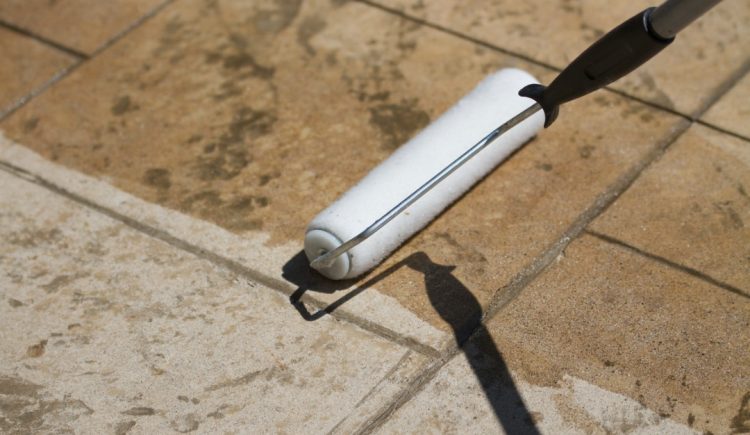A patio may be beautiful right after it’s installed, but over time, the sun can cause damage. Repeated exposure to intense sunlight can make colors fade and materials crack. Fortunately, there are some steps you can take to prevent damage to your patio so you’ll be able to enjoy relaxing in an attractive and safe outdoor space.
How to Prevent Damage to a Paving Stone Patio
If you have a patio made with paving stones, the sun’s UV rays can gradually cause their color to fade. The pigment on the stones can take on a mottled appearance, which can make the color of the aggregate become more apparent. You can prevent this by sealing your paving stone patio once a year.
How to Protect a Concrete Patio
Sunlight and high temperatures can affect a concrete patio from the time it’s poured. It takes time for concrete to absorb water and set. In high temperatures, that process goes faster than usual. If it happens too quickly, the concrete may not have enough time to strengthen as it sets, causing it to crack and shrink.
Workers can reduce the effects of sunlight on the curing process by pouring concrete during a cooler time of day and using a sunbreak to create shade. They can also add an evaporation retardant to the concrete to slow the process of evaporation, giving the concrete time to get strong.
If a concrete patio is exposed to intense sunlight for several hours every day, the polymers in the concrete can be destroyed. Repeated sun exposure can cause concrete to crack and separate. The surface can eventually become brittle and the color can fade.
You can take steps to protect your concrete patio from sun damage after it has been installed. Sealing the patio every two or three years can prevent damage that could be caused by the sun’s UV rays.
Protect Your Patio From the Effects of the Sun
If possible, you can install a cover over your patio to shield it from harsh sunlight. If you decide to apply a sealant to protect your patio from the sun’s rays, make sure that you choose one that’s designed to be used with your type of patio material. Follow the instructions carefully so you know when and how to apply the sealant, how long it will need to set and how often you should repeat the process.
If you notice damage to your patio, have a contractor inspect it. Once problems develop, they’re likely to get worse if they aren’t addressed. Making repairs now may help you avoid a bigger problem and a more expensive repair bill down the road.











